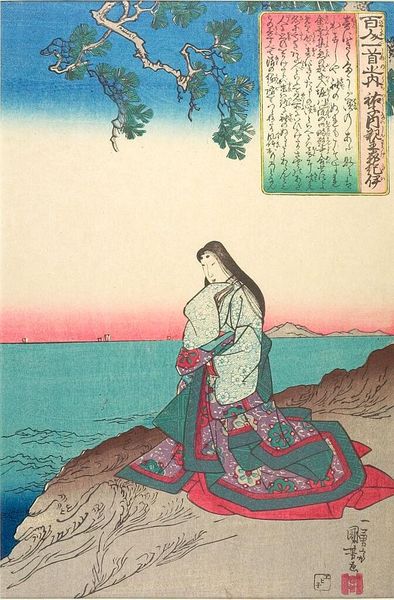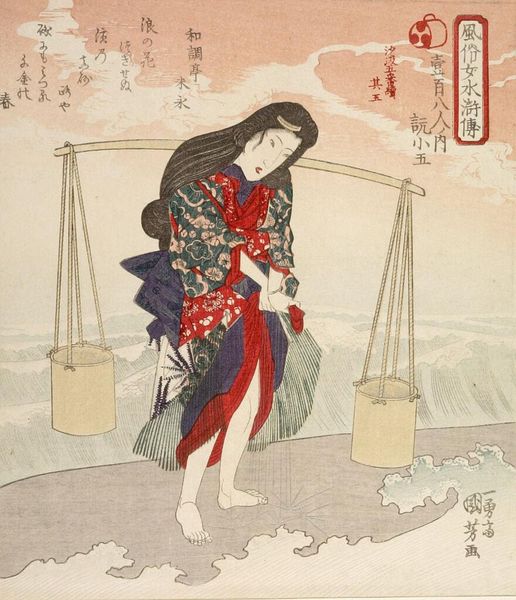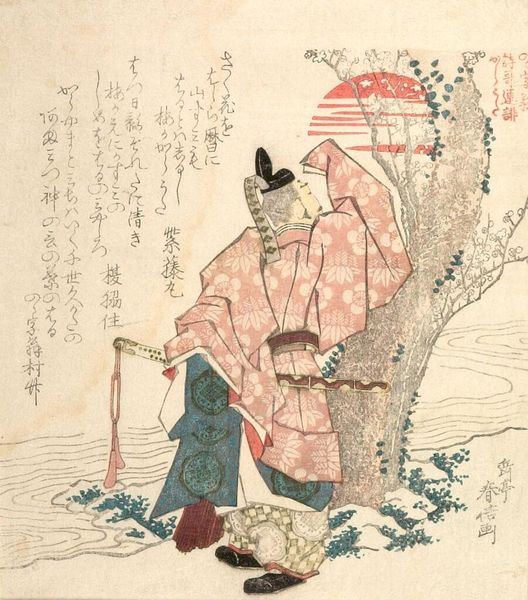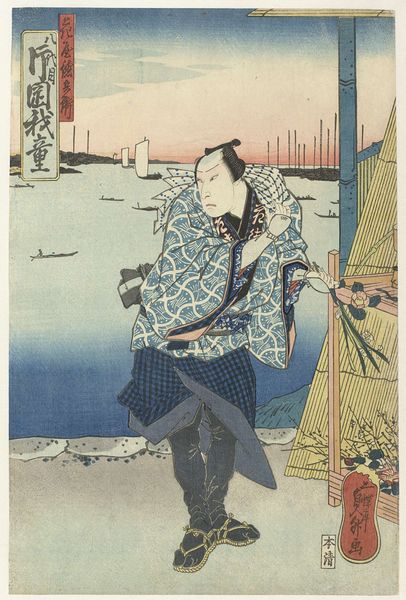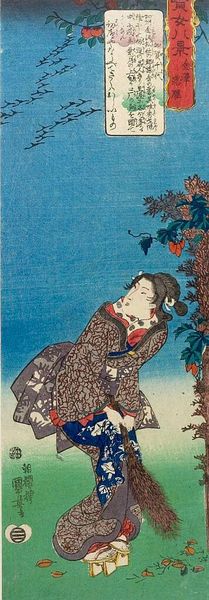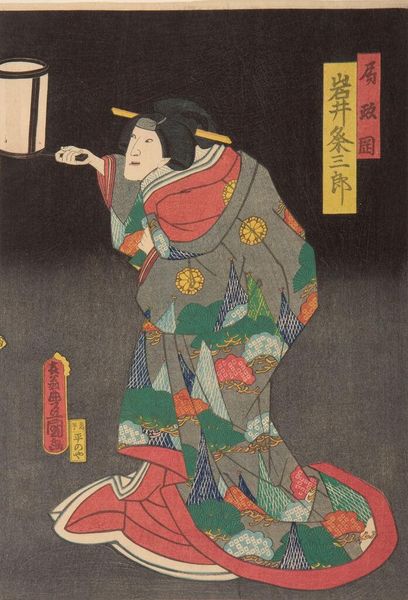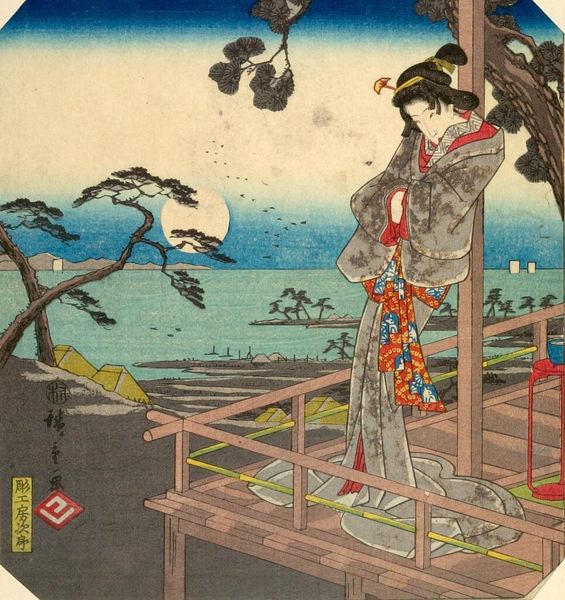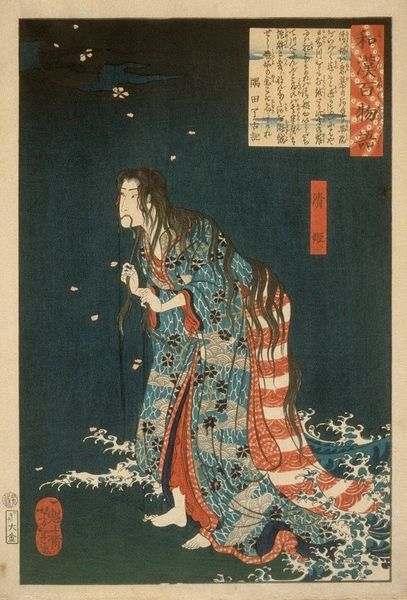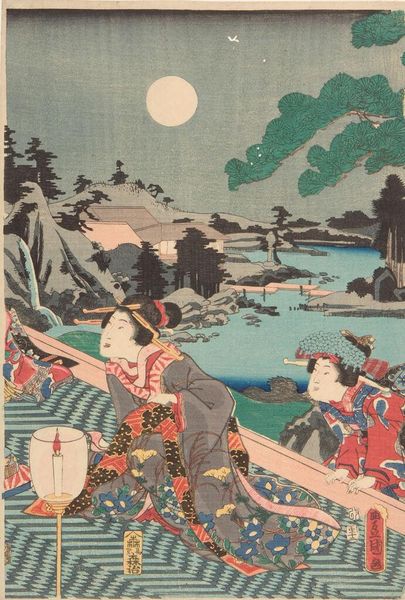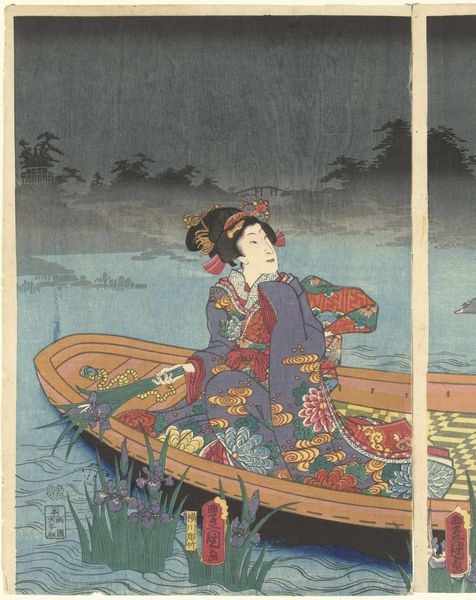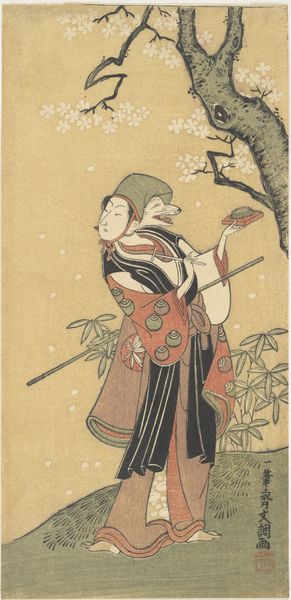
Copyright: Public Domain: Artvee
Editor: Here we have Yoshitoshi's woodblock print, "Narihira and Nijō no Tsubone at the Fuji River," from 1882. It’s such a wistful piece, isn't it? I’m really struck by the contrast between the delicate figures and the wild, almost overwhelming landscape. What catches your eye in this image? Curator: It's interesting you mention wistful. For me, that feeling emanates from the soft, diffused light, that serene moon hanging just so... But there’s a touch of melancholy too, don't you think? Almost a visual echo of transient beauty, much like fleeting love affairs the Ukiyo-e genre often alluded to. What do you make of the tall grass practically swallowing the figures? Editor: That’s true, it is melancholic. Maybe they're trying to hide in the tall grass? The figures seem vulnerable somehow. Is Yoshitoshi trying to tell a specific story? Curator: Ah, exactly! It's not just about hiding, but about being consumed by nature, fate, perhaps even gossip! Yoshitoshi draws upon classical tales, placing the figures within a well-known narrative –think Heian period romance and poetry – a bittersweet rendezvous at the Fuji River. Can you feel the weight of unspoken words just looking at their posture? Editor: I can see that, especially knowing the historical context. It makes the image much richer. I really appreciate how you connected the artistic style with that melancholy mood. Curator: Art history's like detective work, don't you think? Every detail a breadcrumb, every artist a storyteller. This one uses color like whispers of unspoken thoughts. I can’t wait to see how our listeners respond to this artwork!
Comments
No comments
Be the first to comment and join the conversation on the ultimate creative platform.
